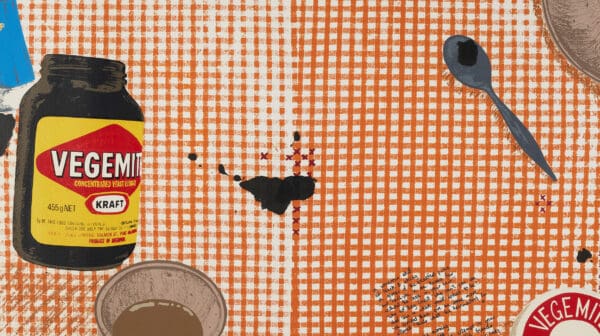
Reframing a Collection
Drawn from the Cruthers Collection of Women’s Art at the University of Western Australia (UWA), Lawrence Wilson Art Gallery’s show Place Makers, reframes the artists—who just happen to be female.

Elizabeth Willing. Original photograph by David Kelly.
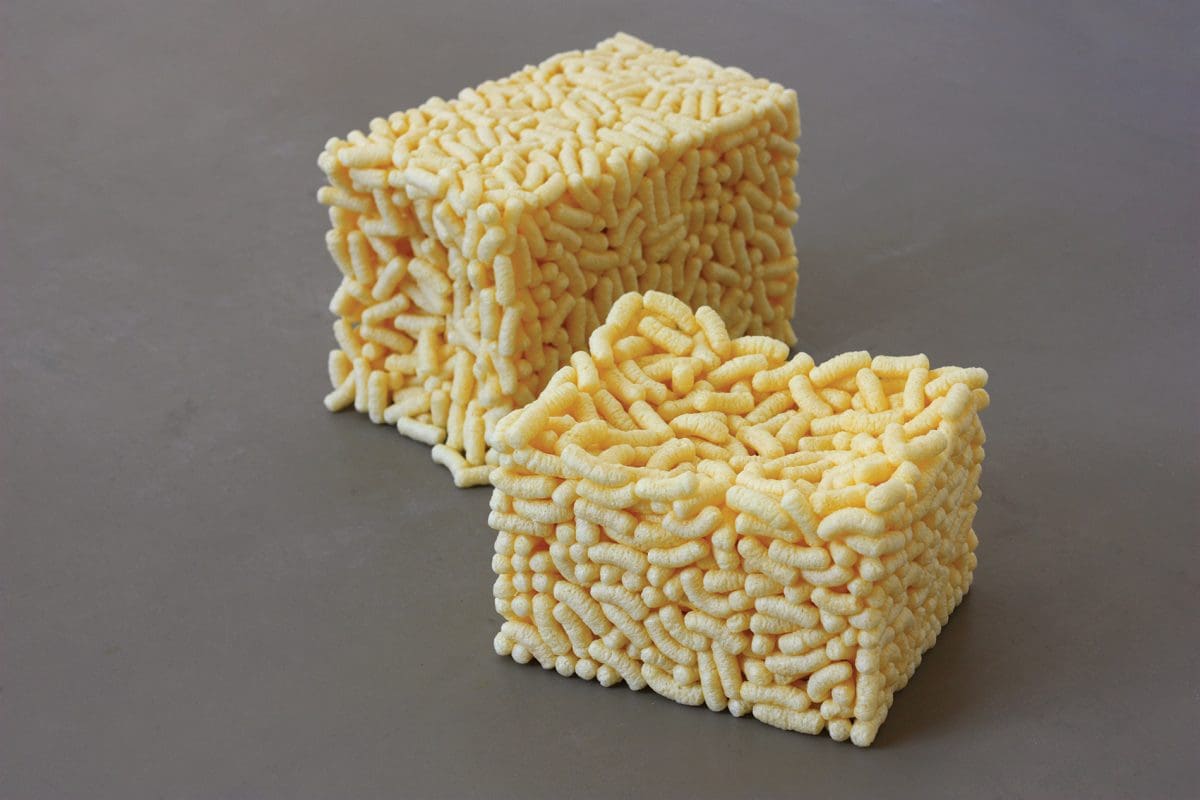
Elizabeth Willing, 2000 Licks, 2014, Maiswürmer (Corn worms) connected with saliva. 45 x 30 x 30 and 40 x 35 x 25 cm.
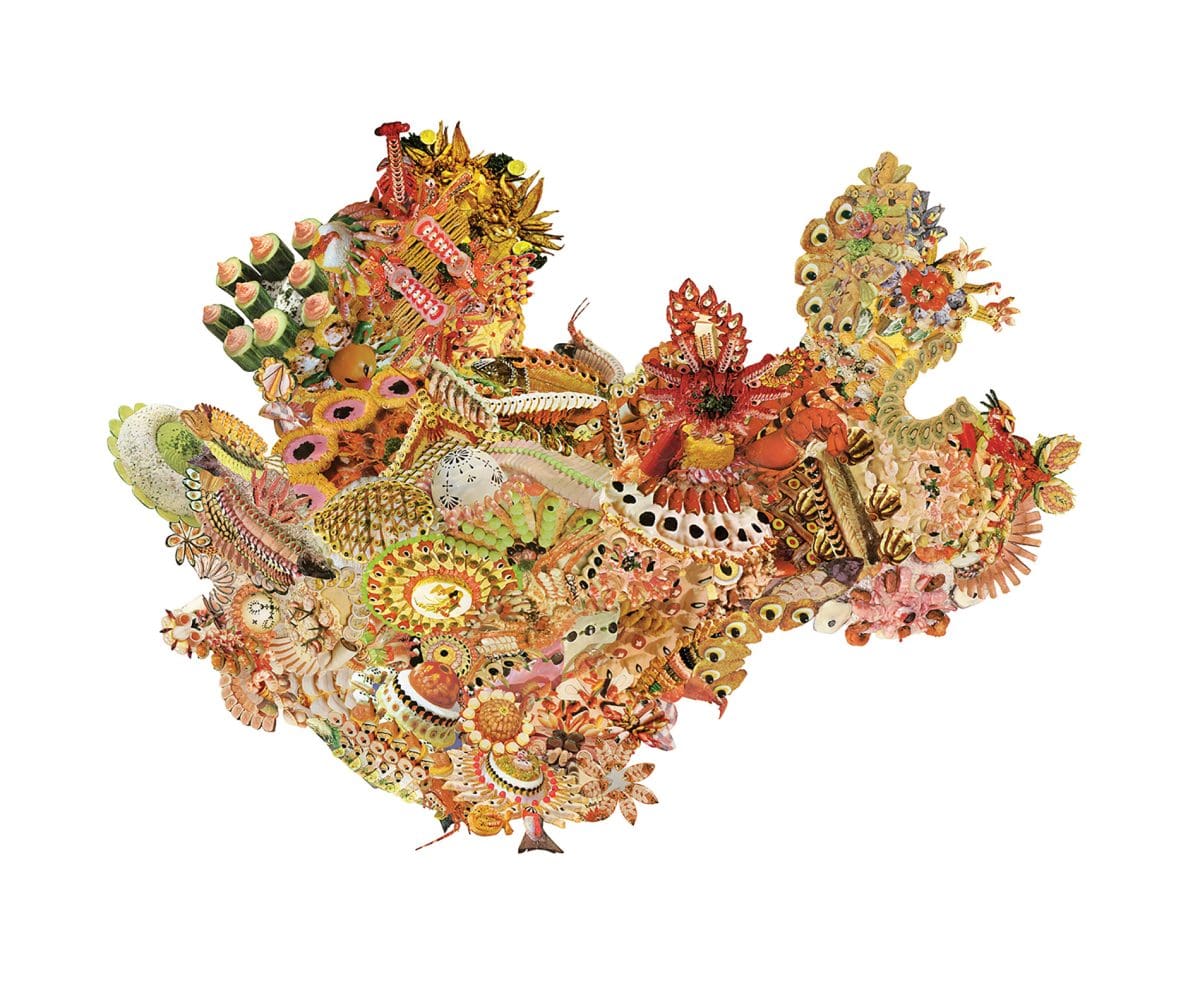
Elizabeth Willing, Surfaced (no.2), 2019, giclée print on cotton paper, 120 x 100 cm.
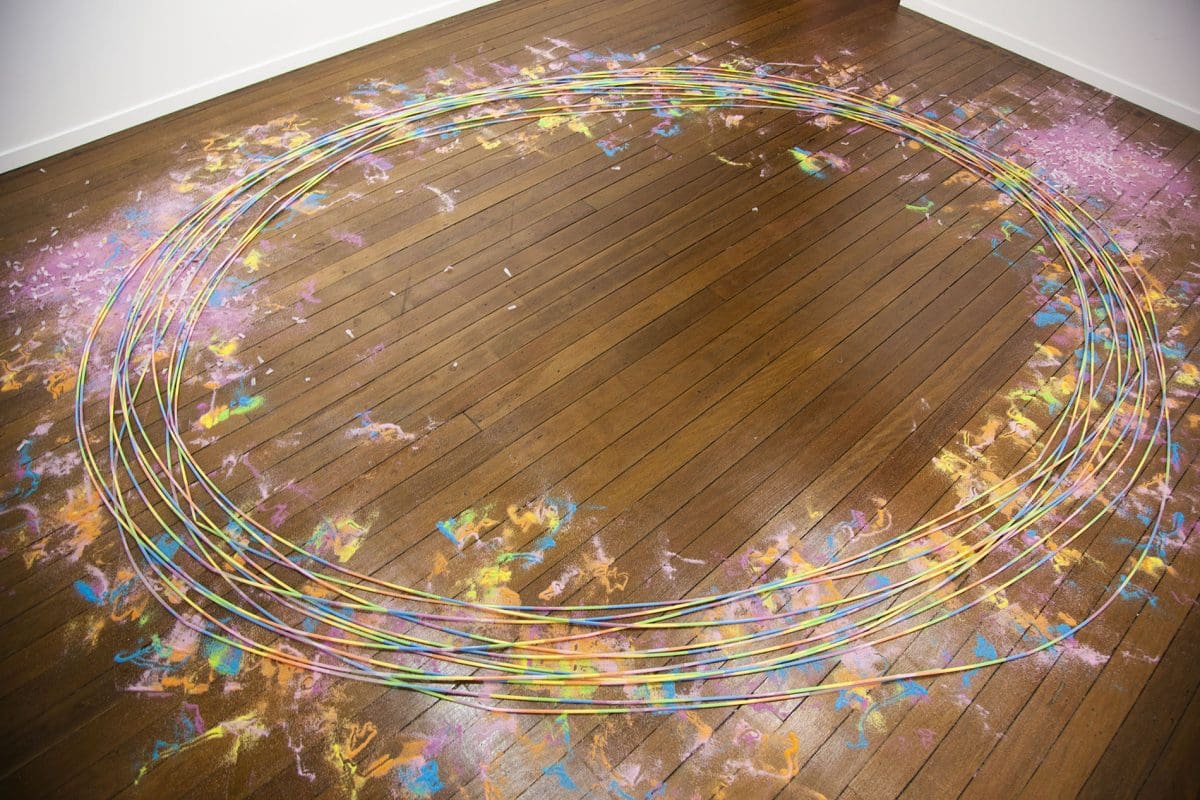
Elizabeth Willing, Moviprep, Sherbet straws. 2020. 400 x 400cm. Image: Chris Howlett.

Elizabeth Willing, Necklace of birth scars, 2021. Linen, cotton, thread, acrylic paint. 105 W X 110H.
Elizabeth Willing has transformed the way we think about food and contemporary art, where food is both the medium and the subject. Through sculpture, participatory events, performance, collages and installation, Willing has used materials from marzipan to sherbet to liquorice. The Brisbane-based artist has posed thoughtful, often humourous, questions on eating, taste, sense, consumption, sustainability and foraging, alongside thinking about the cultural rituals and understandings of food. Ahead of her upcoming exhibition at Tolarno Galleries, we asked Willing 20 quick questions.
Who was your first art love?
Louise Bourgeois.
What was the first food item you used as a medium?
Toffee.
You often use industrial food products as opposed to ‘fresher’ food products. Why so?
On the one hand they last longer. Fresh foods decay in the gallery, whereas processed foods offer visitors a similar viewing or participatory experience at the beginning or end of the exhibition. Processed foods contain so many mysterious ingredients and undergo so many different levels of processing. It is unimaginable that the body can even absorb any nourishment from it. I also think they can distil some facets of a food culture or society. Processed foods are joyful, colourful design objects—a good example are the tubes of sherbet used in my work Moviprep showing at Tolarno.
Best time of day to create?
Office in the morning, studio in the afternoon and evening.
Your worst art faux pas?
Trying to unearth my worst is painful, revealing it in print—dreadful.
How often are you in the studio each week?
I need to touch base with the studio at least once a day—this is easy as I have a home studio. My newest body of work has been extremely laborious and requires between two and six hours of stitching per day, so I have had to find even more time than usual among the demands of administration, teaching, and family.
The most interesting thing someone has said to you about your work?
In relation to my participatory work, a mentor once asked me to consider if audiences can ‘think and do’ at the same time. I carry that question with me, and I still think about it often, and although I do not try to answer it directly, it influences my research.
Organisation or chaos?
Organisation.
For a 2019 work Licks you made these package-like sculptures from Little Bellies, which is a corn-based snack for babies—but to attach all of the Little Bellies together in a larger piece, you licked each one. How many Little Bellies would you have stuck together for that work?
Though I did not keep track, I am sure after making those three sculptures it was in the thousands.
When audiences encounter something like Licks, or art made from food, what are you hoping to prompt in the viewer?
I hope that familiarity with the materials functions as a platform for engagement, to consider the processes that the materials have gone through, and to begin a conversation with or for the object. At the best of times art can be a conduit for empathy and poetry; food and hospitality are two of my favoured catalysts for those effects.
If you could collaborate with any artist, dead or alive, who would it be?
Grant Achatz, an American chef and restaurateur.
It feels like the multi-sensory aspects of food isn’t something that you see much in contemporary art. Why do you think that is?
My reasons for using food are personal and specific. I don’t think an artist would use it long-term unless they had a good reason. While the sensory aspects of working with food and hospitality are enticing, the practical considerations are extremely challenging. Many of my artworks are problem-solving activities in which I am exploiting the multi-sensory, but also disabling the unstable and unpredictable qualities of food materials.
There are obstacles to working with volatile materials in larger institutions. Works using food or other organic materials are a challenge to conserve, or to continue restaging, so they are expensive and time consuming for artists and collectors. I think that there are plenty of artists who begin their careers exploring challenging methods and materials, but they move away from it, possibly in part because of the difficulties I’ve flagged.
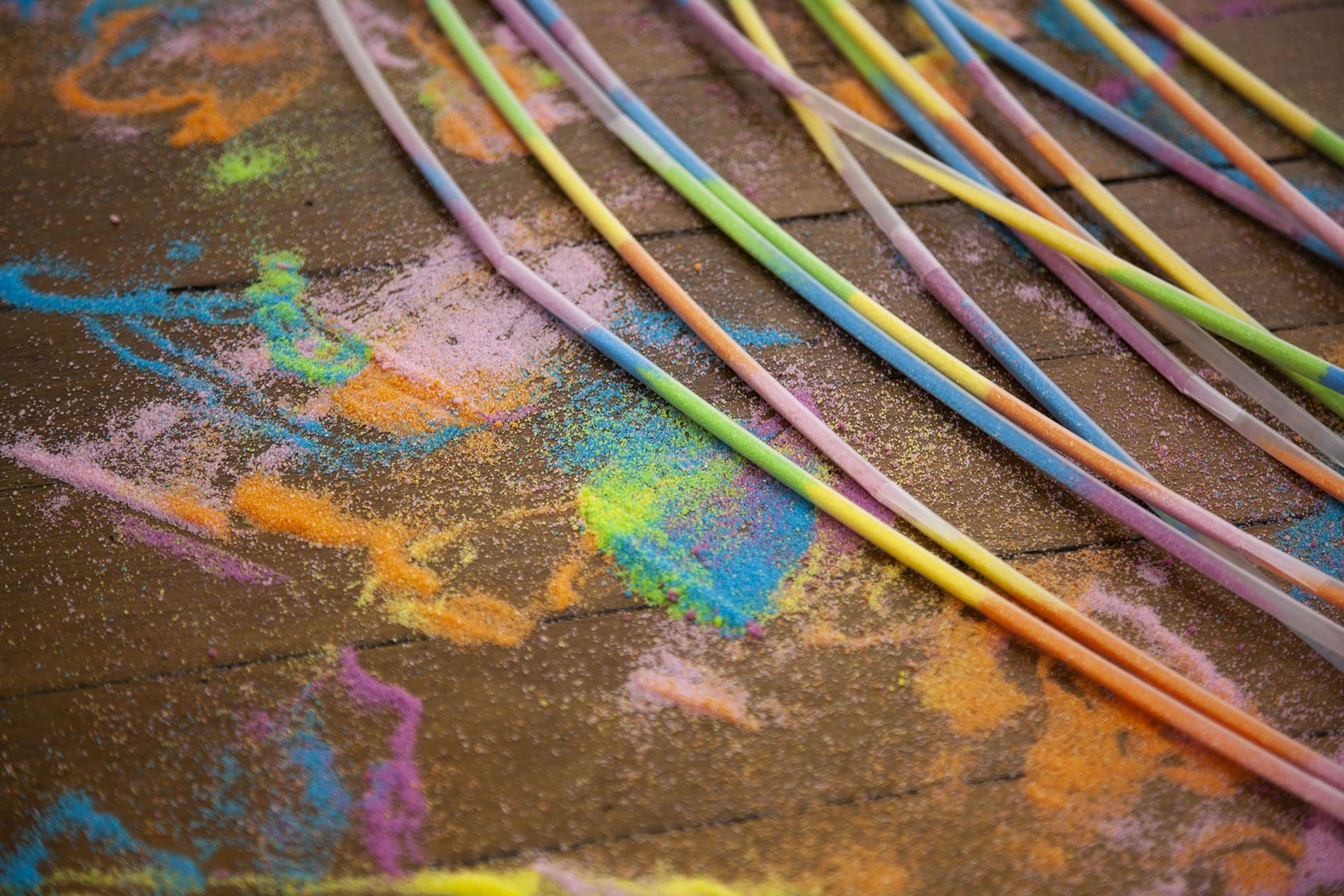
What are your signature dishes when cooking?
I mostly bake, I like classic Women’s Weekly-style recipes.
In your work certain histories of food, whether cultural, gendered, colonial or Indigenous, are often subtly evoked—how much research goes into your work?
My research begins in everyday life. I continually feed my curiosity with all kinds of provocations, and I regularly document my thoughts and ideas in diaries. My methods for maturing ideas are diverse and include reading, conversations, tests, drawing, Sketchup models, and online searches. I also draw heavily from books and documentaries about chefs. All of my works are snapshots of my thoughts and research at that point in time; I try not to force an idea, or to mature it before it is ready.
Most importantly I trust my instinct to make the connections between ideas, processes, materials, forms or patterns. Research without instinct or play is too dry for my work, I need to make connections that I don’t understand at the time so I can learn about the work as it develops and as it is exposed to the public—exhibition and storage is also research.
Classic ‘Elizabeth Willing’ drink order at the bar?
Gluten free beer.
Quick advice for young artists?
Surround yourself with supportive and positive colleagues. Work on your writing. Be organised.
An art experience that’s stuck with you?
American artist Liza Lou’s Solid / Divide exhibition at White Cube in London in 2014, and dinner at Osteria Francescana Modena, a three-Michelin-star restaurant in Modena, Italy.
You often give space for audience participation— what do you like about having the viewer involved?
It’s my way to prompt a type of hospitality, and to therefore engage audiences in the complex relationships and roles inherent in hospitality: the guest, the host, and the parasite. Participants generate new forms by bringing their own methods of making to the work; by handing over some creative agency they become the new hosts. I am very often surprised—sometimes I don’t enjoy it, which is okay.
Best colour to create with?
Various shades of raw linen. And pink, which has a synesthetic relationship to enhancing sweetness.
What will we see in your Tolarno show?
Hand-printed and embroidered linens accompanied by a large multi-sensory installation made with sherbet.
Forced Rhubarb
Elizabeth Willing
Tolarno Galleries
28 May—18 June
This article was originally published in the May/June 2022 print edition of Art Guide Australia.